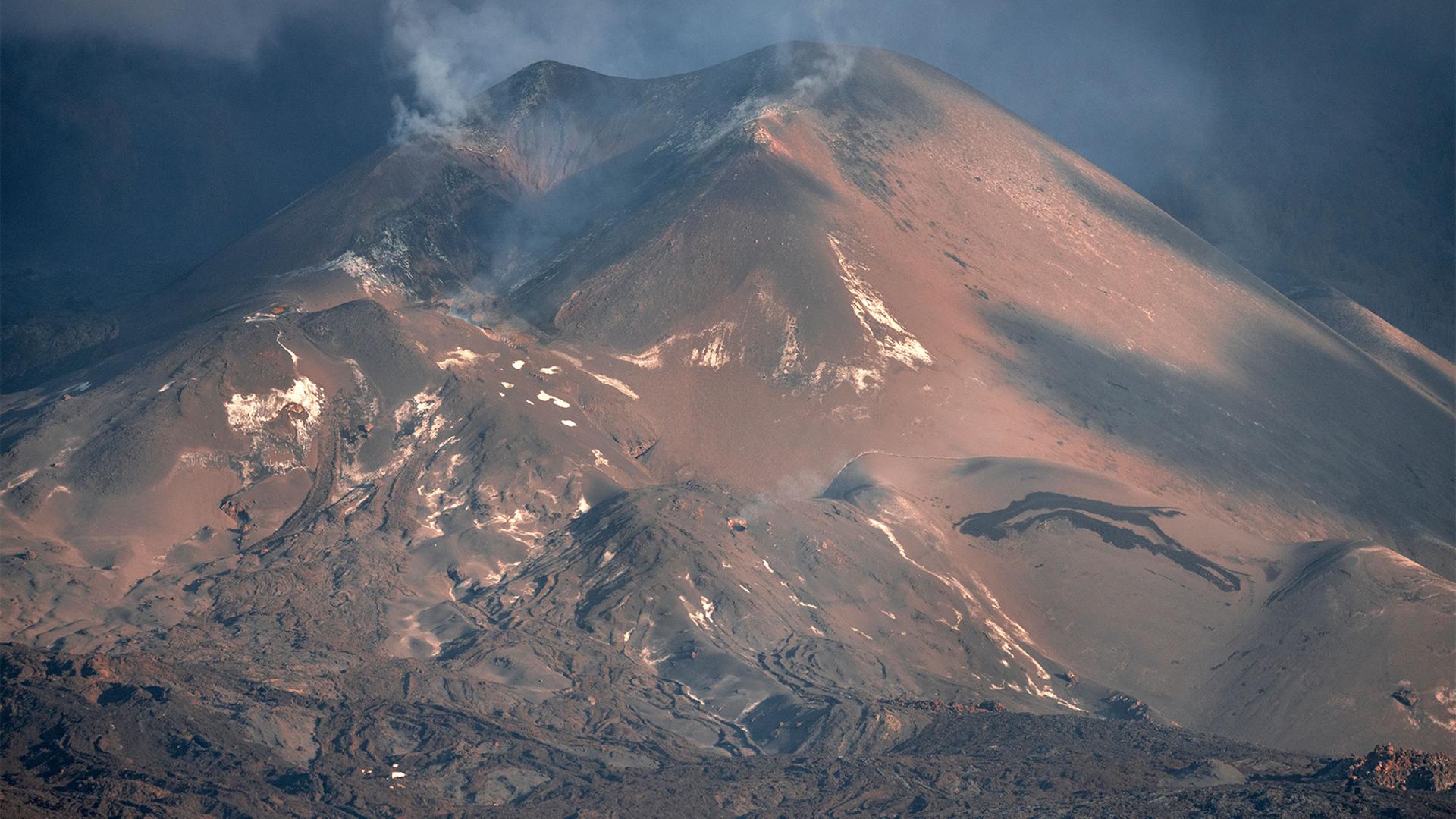Residents remember their losses as they rebuild from La Palma’s volcanic eruption
Twenty-five-year-old Alexandra Gómez was not prepared for an evacuation.
She was living with her mother and brother on the small island of La Palma, part of Spain’s Canary Islands archipelago. On Sept. 19, she received news that a nearby volcano, the Cumbre Vieja — which experts had been monitoring for months — had erupted. Authorities had warned residents of an imminent eruption and had evacuated several neighborhoods ahead of time.
But Gómez’s area wasn’t on the list. The crater was expected to open farther away. It wasn’t until she stepped outside that she realized the predictions had been wrong.
“When we saw the explosion and noticed the lava was headed our way, we ran out of the house with just the clothes on our back and the few documents we could grab.”
“When we saw the explosion and noticed the lava was headed our way, we ran out of the house with just the clothes on our back and the few documents we could grab,” Gómez said.
She and her mother, who was also home that day, went to Gómez’s grandmother’s house farther down. But less than an hour after arriving there, emergency service workers showed up to evacuate that area too.
Related: Spain vows to help rebuild La Palma after devastating volcano eruption
“The lava was expected to move fast, and everyone was desperately running out of their houses,” Gómez said.
But the lava flowed a lot slower than anticipated, so Gómez and her family were able to return to their house twice before it was completely destroyed.
“I grabbed several sentimental belongings. … I looked up at the exploding volcano and cried.”
“I grabbed several sentimental belongings, including a blanket handsewn by my great-grandmother, and as I put them in the car, I looked up at the exploding volcano and cried,” said Gómez, who’s been living at a relative’s house since. She says she often stays up at night remembering all the other things she forgot to take.
Related: Southern Spain’s green-belt project aims to stave off impending desertification
The volcano’s eruption was officially declared over on Christmas Day after 10 days of no lava flows or seismic activity, and more than three months since it first erupted.
Like Gómez, more than 2,000 people lost their homes to a blanket of lava, which is estimated to have destroyed more than 1,600 buildings and roughly 50 miles of roads. The eruption also changed the island’s coastline. When the lava reached the ocean, it created two big deltas.
Other neighborhoods are completely covered by thick layers of ash — from a distance, they look like dark-gray sand dunes that have swallowed up trees and houses. Over the past few weeks, emergency service personnel and volunteers have been working around the clock to dig them out.
But Carlos Clemente, from a newly formed association of residents affected by the volcano, says the future remains uncertain.
Related: As energy prices soar in Spain, residents seek renewable alternatives
“Residents haven’t received any of the donations yet, which began pouring in as soon as the volcano erupted,” Clemente said. “We also haven’t seen the millions of euros promised by the Spanish government.”
He blames local officials for a mismanagement of funds.
Clemente’s 75-year-old mother lost her house and allof her belongings to the volcano, including photographs and letters. She’s been living with relatives on another part of the island, but Clemente hopes she’ll soon be given housing.
“Rebuilding our lives and communities will take a long time. And it’s up to public officials to listen to the needs of those affected.”
“Rebuilding our lives and communities will take a long time,” Clemente said. “And it’s up to public officials to listen to the needs of those affected.”
Juan Vicente Rodríguez is another member of the association and the president of Cooperativa Covalle, a collective of banana farmers whose headquarters was destroyed by the lava.
“Banana farmers suffered a loss of 50 million euros [more than $57 million] in damages when the lava ate up more than 900 acres of agricultural fields,” Rodríguez said.
Bananas are La Palma’s main export, accounting for 50% of its gross domestic product and providing thousands of direct and indirect jobs. The destroyed cropland made up around 30% of all of the island’s production, Rodríguez said.
“If these plantations aren’t rebuilt, the island will lose an important economic hub,” Rodríguez said. “The problem is, the destroyed farmlands are now dried lava, and it’s unclear if we’ll be able to plant bananas there again.”
The biggest challenge, he said, will be finding new territory to harvest — there may not be enough to go around.
“It’s a traumatic situation, it feels like a sort of death,” Rodríguez said. “But it could be a chance to start over, by investing in other industries that provide new opportunities.”
The story you just read is accessible and free to all because thousands of listeners and readers contribute to our nonprofit newsroom. We go deep to bring you the human-centered international reporting that you know you can trust. To do this work and to do it well, we rely on the support of our listeners. If you appreciated our coverage this year, if there was a story that made you pause or a song that moved you, would you consider making a gift to sustain our work through 2024 and beyond?
